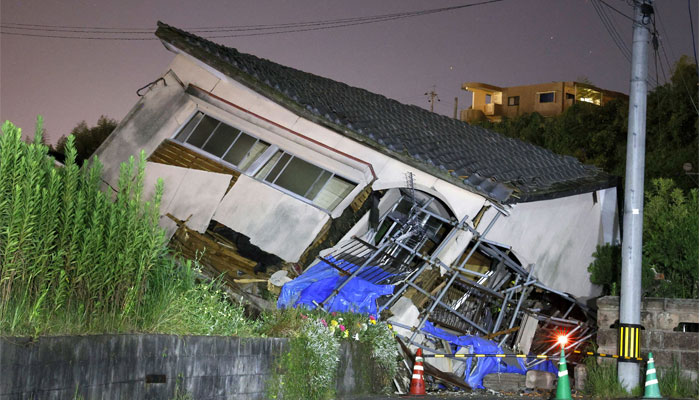Life in Japan to return to 'normal' after lifting week-old 'megaquake' alert
Japan's "megaquake" warning was imposed last week after earthquake of magnitude 7.1 injured 15 people
August 15, 2024

The Japanese government on Thursday told residents that their lives could now "go back to normal" after it lifted a week-old warning that a "megaquake" potentially causing colossal damage and loss of life could strike.
Thousands of Japanese people cancelled their holiday plans and stocked up on essentials after the alert that such a catastrophe might hit the archipelago, which is home to 125 million people, AFP reported.
"Since there were no abnormalities detected in seismic activity and crustal deformation, the special call for attention ended at 5:00pm (0800 GMT)," disaster management minister Yoshifumi Matsumura said.
"But it doesn't mean the risk (of a major earthquake) has been eliminated," Matsumura told reporters.
"We have been asking for special precautions, such as sleeping while being prepared to evacuate immediately. But we will no longer ask for these steps, and the people of Japan are free to go back to normal lifestyles."
Last Thursday, Japan's weather agency had reported a "higher than normal" likelihood of a megaquake due to a magnitude 7.1 jolt that injured 15 people, earlier in the day.
Last week's tremor is known as a subduction megathrust quake that has previously occurred in pairs and can unleash massive tsunamis.
The advisory concerned the Nankai Trough between two tectonic plates in the Pacific Ocean.
The 800-kilometre undersea gully runs parallel to Japan's Pacific coast, including off the Tokyo region, the world's biggest urban area and home to around 40 million people.
In 1707, all segments of the Nankai Trough ruptured at once, unleashing an earthquake that remains the nation's second-most powerful on record, which also triggered the last eruption of Mount Fuji.












